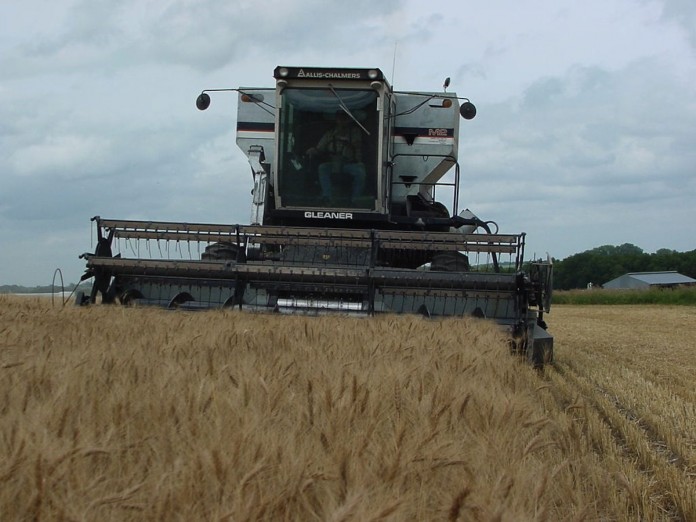By CASEY CHUMRAU
ARLINGTON, Va. — Corn continues to play an influential role in U.S. wheat price discovery.
Wheat futures are following corn futures up, sideways and down — sometimes in spite of solid wheat fundamentals.
This observable linkage probably will not change anytime soon, as the 2013/14 corn harvest is likely to set new U.S. and world records.
Following a sharp decline in 2012/13 due to drought, ample supply this year pushed both corn and wheat futures lower, albeit at different rates.
Planting decisions
As winter wheat planting season quickly approaches, wheat farmers and their customers should closely follow how the corn-wheat dynamic plays out for 2014/15.
Although the shift has slowed somewhat, the trend for U.S. wheat to lose planted area to corn and soybean production continues.
Chinese-driven demand for soybeans and the emergence of corn-based biofuels increased the profitability of these crops at a faster pace than wheat. In addition, new varieties with dramatically higher yield potential helped corn and soybeans expand into traditional wheat-growing areas.
More wheat?
After this year, however, U.S. farmers may plant more wheat and soybeans and less corn for 2014/15, according to a new Farm Futures magazine survey released Sept. 3.
One year of lower planting would hardly reverse the trend, but additional factors indicate more farmers may increase their wheat planted area this fall.
First, as of Sept. 4, the nearby CBOT soft red winter (SRW) wheat contract held a $1.35/bu premium to CBOT corn, the largest such spread in early September since 2010.
That premium increases to $1.77/bu for the March 2014 contacts.
Farmers know that at least an average U.S. corn production year in 2014/15 — adding to this year’s record supply — could further suppress corn prices.
Good planting conditions
Additionally, this year’s best fall planting conditions since 2010 may encourage farmers to plant wheat.
While still below the five-year average in most areas, soil moisture levels are much improved from this time last year in the central and southern Plains.
The percentage of land considered to have adequate moisture is up from 22 percent to 38 percent this year. Equally important, the areas rated to be in extreme or exceptional drought is down from 23 percent last year to just 10 percent.
While this is a positive trend, dryland farmers may take advantage of soil moisture conditions now by planting wheat rather than rolling the dice to see if adequate soil moisture remains in the spring for a corn crop, particularly after the previous two challenging years for corn.
Global demand
Finally, significant upside demand from China is helping support wheat prices this year and could play a similarly robust role for corn.
Reuters recently reported a researcher with a Chinese government think tank suggested that China could import 20 to 30 million metric tons (MMT) of corn per year to cover growing supply shortages. That is equal to as much as four times its current level of imports, around a quarter of globally traded corn and up to twice as much as Japanese purchases, the world’s largest corn importer.
While many factors will shape and re-shape corn’s influence on wheat prices, the ongoing battle for planted area will drive continued market volatility.
(The author is a market analyst with the U.S. Wheat Associates.)










